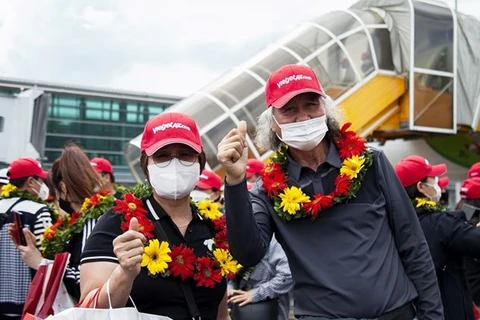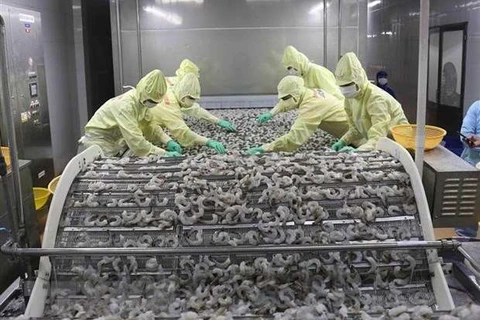Kien Giang (VNA) – The Mekong Delta province of Kien Giang is working towards turning Phu Quoc into a first-tier urban area in 2025, making the island city a national and international maritime tourism centre.
According to Chairman of the Phu Quoc People’s Committee Huynh Quang Hung, the committee is focusing on completing criteria for a tier-1 city, including those in sustainable socio-economic development, infrastructure system, human resources, and environmental protection.
Hung said that Phu Quoc will promote tourism development towards higher quality and sustainability, making it a spearhead economic sector with close connections with other domestic, regional and international localities.
In 2025, the city expects to welcome 10 million visitors, including 4 million foreigners, with average growth of 27.2 percent per year.
At the same time, Phu Quoc will pay greater attention to the development of financial, banking, telecommunications, health care, transport and trade services, as well as the promotion of its specialty products and the expansion of agriculture and aquatic farming.
In the 2021-2025 period, Phu Quoc targets growth of 3.32 percent per year in agro-forestry-fisheries production.
It will also focus resources to complete its transport system, and propose the construction of T2 terminal of the Phu Quoc International Airport, while upgrading its power supply system. The city will invest in the construction of a waste treatment plant using high technology to reduce impacts on the environment.
Known as “Pearl Island”, Phu Quoc is the largest island in Vietnam and also the largest of the 22 making up the group of Phu Quoc islands.
Located 120 km from Rach Gia city and 45 km from Ha Tien city, Phu Quoc district boasts a long coastline with many pristine beaches. Promising fishing grounds and deep-sea waters have potential for developing the fishing industry and seaports.
It has become a popular destination for foreign and domestic tourists.
Phu Quoc district was recognised by the Prime Minister as a tier-2 city in 2014.
In 2006, the Kien Giang coastal and marine biosphere reserve, which includes Phu Quoc district, was recognised by UNESCO as a World Biosphere Reserve.
In December 2020, the National Assembly Standing Committee passed a resolution establishing Phu Quoc city from March 1, becoming the first island city in Vietnam./.
According to Chairman of the Phu Quoc People’s Committee Huynh Quang Hung, the committee is focusing on completing criteria for a tier-1 city, including those in sustainable socio-economic development, infrastructure system, human resources, and environmental protection.
Hung said that Phu Quoc will promote tourism development towards higher quality and sustainability, making it a spearhead economic sector with close connections with other domestic, regional and international localities.
In 2025, the city expects to welcome 10 million visitors, including 4 million foreigners, with average growth of 27.2 percent per year.
At the same time, Phu Quoc will pay greater attention to the development of financial, banking, telecommunications, health care, transport and trade services, as well as the promotion of its specialty products and the expansion of agriculture and aquatic farming.
In the 2021-2025 period, Phu Quoc targets growth of 3.32 percent per year in agro-forestry-fisheries production.
It will also focus resources to complete its transport system, and propose the construction of T2 terminal of the Phu Quoc International Airport, while upgrading its power supply system. The city will invest in the construction of a waste treatment plant using high technology to reduce impacts on the environment.
Known as “Pearl Island”, Phu Quoc is the largest island in Vietnam and also the largest of the 22 making up the group of Phu Quoc islands.
Located 120 km from Rach Gia city and 45 km from Ha Tien city, Phu Quoc district boasts a long coastline with many pristine beaches. Promising fishing grounds and deep-sea waters have potential for developing the fishing industry and seaports.
It has become a popular destination for foreign and domestic tourists.
Phu Quoc district was recognised by the Prime Minister as a tier-2 city in 2014.
In 2006, the Kien Giang coastal and marine biosphere reserve, which includes Phu Quoc district, was recognised by UNESCO as a World Biosphere Reserve.
In December 2020, the National Assembly Standing Committee passed a resolution establishing Phu Quoc city from March 1, becoming the first island city in Vietnam./.
VNA


























